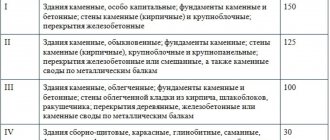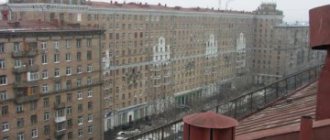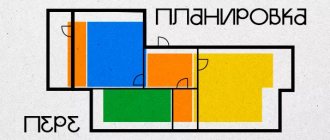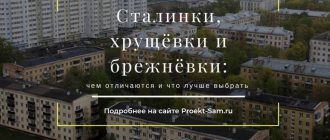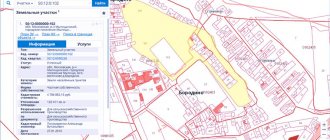What is “Khrushchev” for a modern young man? As a rule, it will have associations with old apartment buildings. Which don't look very nice. He'll be right - right now, Khrushchev buildings usually look just awful. They have been battered by years and lack of proper care. However, a little over 50 years ago, the Khrushchev era not only changed the consciousness of Soviet people, but also showed the first example of urbanism on our land. The housekeeper understands what Khrushchev is and why it was needed. And also what she eventually became.
After whom the house was named Khrushchevka
After the Bolsheviks came to power, the country began to urbanize. Production (factories and factories) opened everywhere, so yesterday’s peasants went to the cities.
Housing was built especially for them. However, the pace of construction was much slower than the pace of migration, so communal apartments appeared. The shortage of urban housing was also felt in the 50s, when Nikita Khrushchev came to power.
The problem could not be solved earlier because of the war, so housing reforms in the country are already overdue. Khrushchev took them on, and almost in the first place.
Houses built by Khrushchev
Three-, four- and five-story houses made of panels or bricks, devoid of architectural delights on the facade - this is the appearance of typical “Khrushchev” buildings. It is complemented by another common feature - the absence of an elevator. The designers also did not provide for a garbage chute inside the building. All this was done in order to save money. The houses turned out to be not too expensive both in terms of money and time, so very often they were built in entire microdistricts.
Some modifications of Khrushchev-built houses were assembled within two weeks. About 400 factories throughout the country provided construction sites with ready-made reinforced concrete structures.
How the housing problem was solved in the USSR
So, there is a problem - the lack of housing in cities. It had to be solved not only quickly, but also cheaply.
By that time, technology and experience made it possible to build housing quickly if there were well-written regulations. In 1955, a decree was issued against excesses in architecture - they considered everything that was not of practical use.
This was another step towards reducing the cost of work. As a result, a project for new houses was developed, which later became known as Khrushchev houses.
With the help of research, architects found out how many square meters a person needs to live. It was experimentally found that the optimal kitchen area should be 5-6 meters. And the sanitary unit had to be combined, and the ceiling height was limited to 2.5 meters.
Also, a storage room was necessarily built into the housing, which was supposed to serve as a place to store clothes for other seasons. There were also minimum values. For example, the width of the room had to exceed 2.2 meters.
To save money, we had to abandon elevators. Due to the fact that it is difficult for a pensioner to rise above the fifth floor (this was proven by experiments), Khrushchev buildings became five-story.
How did the humanities influence construction?
Due to the fact that Khrushchev apartments were almost identical in every part of the country, there was a need to make new furniture - it was difficult to even drag the old one into the apartment. Not to mention that it took up a lot of space.
As a result, furniture production has changed greatly. Due to the fact that entire districts were being built, there was a need to create regional infrastructure - shops, hospitals and playgrounds were needed.
Gradually it became clear that the creation of a certain urban environment began to influence the people living in it. If we look at a standard city that develops gradually. We see how people change it. In this case, the state broke this chain and became a subject itself.
As a result, it was possible to predict how people would go to work. And what will they do after it, and so on.
This is exactly the case when sociologists teamed up with architects. And over time, they learned to build the most practical areas without any unnecessary details.
How did Khrushchev change?
Initially, it was decided that they would be 4-story, but very quickly they were made 5-story - there are examples of the first option, but there are not many of them. Later, experiments began with 9-story buildings in which one elevator was installed.
According to the regulations in force in the USSR, if the house has more than 9 floors, then a second elevator must be installed, but in the end this option was abandoned. It is for this reason that there are so many 9-story residential buildings in Russia.
Despite attempts to make all houses the same, as standard as possible. They could differ in different parameters.
In the second half of the fifties, Khrushchev-era apartment buildings with high ceilings were actively built in Leningrad, and the kitchen occupied 7-8 square meters. True, after 1960 they stopped building them, as there was a transition to the construction of houses of a different series.
In 1959, house-building factories were approved, which made it possible to increase the efficiency of creating structures for future houses - in the best years, a Khrushchev house could be built in 12 days, and the record time was 5 days (this is how the team in Leningrad distinguished themselves).
It is interesting that the first mass-produced houses were not built for a long time - and it was planned to operate them for only 25 years. The government understood that those technologies. Which are used in the construction of Khrushchev buildings can give way quite quickly.
The series developed later had a longer service life - 50 years. More than 60 years after the construction of the first Khrushchev buildings, we see that people still live in them.
Sometimes buildings have already passed their maximum service life twice, which affects living conditions. But this is a completely different question.
It is worth noting that the Soviet government officially spoke about this. That such housing can be used for more than a hundred years is quite controversial.
Khrushchev buildings
This is the first type of housing of mass construction from 1956 to 1985. “Even though it’s small, it’s our own”—this home became the first nest for many who were tired of living in public view in a communal apartment. At first, the Khrushchev buildings were brick, and later - panel ones. They are similar in appearance and have 5 floors (less often 4).
Apartments in brick Khrushchev buildings have an area of 22 m², a kitchen rarely larger than 4.5 m² and a combined bathroom. Rooms are 6–9 m², there are even rooms of 4 m² without windows. These undistinguished dimensions, low ceilings up to 2.6 meters and poor sound insulation currently result in the only advantage - low cost. These houses were designed for 25 years of service, but are still in use today, so even with a very limited budget, it is better to save up to buy something more reliable. At a minimum, it is worth carefully inspecting the house both inside and out, assessing its strength and quality of communications.
But even with all these shortcomings, brick Khrushchev buildings are better than panel ones. With similar areas, apartments of this type have huge heat losses due to the quality of the walls. It makes sense to buy such apartments only if they have been insulated.
How the Khrushchev era changed the appearance of cities
It is worth noting that not only mass-produced panel houses were built at that time, but they were the ones who “increased” the pace of construction. And in 1956, 41 million square meters of housing were put into operation. Whereas in 1960 it was already 82.8 million square meters.
High rates of housing commissioning. They greatly changed not only the appearance of cities, but also the consciousness of people. It was only later that people began to criticize Khrushchev. And for a family in the 60s, moving from a hostel or communal apartment to their own home was a real miracle.
The presence of running water and sewerage made the stay almost ideal. Some series included a bathtub. Most often it was sedentary, although in some modifications there was only a toilet and a sink - it was assumed that people would go to wash in public baths.
One way or another, the level of comfort. Which was provided by serial panel houses. It was much higher than the standard dormitory for those times.
It is unlikely that people were very concerned about the height of the ceilings, which they began to talk about only later.
It is worth understanding that Khrushchev’s transformations had a very strong impact on the ideological coloring of citizens. Even though the property was not privately owned, it began to be perceived that way.
The man understood that he lived in his Khrushchev apartment, and after death it would go to his children. This fact strongly contradicts the ideas of communism, which were still talked about a lot at that time.
Already under Brezhnev, there will be more opportunities for obtaining private property - however, it will be called “personal property”. It will be difficult to sell it, but otherwise it will be private (or perceived as such).
Khrushchev - what type of house and its features
Khrushchev houses are Soviet standard sockets or brick houses with small apartments. They were built from 1956 to the early 1980s. In most cases, houses have five floors, but there are no elevators. Their construction began after the decree, which was called “On the elimination of excesses in design and construction.” Just by this name you can guess that a standard Khrushchev building is a house and apartment with simple architectural solutions. Typical series of Khrushchev buildings were built from panel blocks (the most common option), block materials and bricks.
Let us list which series of Khrushchev-era houses were primarily built in Moscow and other Russian cities:
- five-story panel buildings 1-335, 1-464, 1-466, 1-467, 1-515/5, 1605-AM/5, 1MG-300, 1R-303-2, II-07, II-07-19, II-32, II-32-130, II-35, II-38;
- block five-story buildings 1-439A, 1-439Ya, 1-510, II-17;
- brick five-story buildings 1-447, 1-511, II-34;
- block nine- and eight-story buildings II-18-01/08 B, II-18-01/09 B;
- nine-story brick buildings II-18-01/09 MIK;
- frame-panel houses K-7.
Some house designs allowed the construction of buildings not of five floors, but of three or four. Such variations of the standard series of Khrushchev buildings were built mainly outside large cities: beyond the Moscow Ring Road and the Ring Road, in the provinces.
Why were the Khrushchevs scolded?
Of course, the first residents did not pay much attention to the shortcomings of the apartments in Khrushchev-era buildings. However, later people began to say that the Khrushchevkas had problems.
For example, under the window in the kitchen there was a mini-cabinet for storing food. In winter, it was possible to store frozen food there, since the temperature in this mini-cabinet was negative.
This place was nicknamed “Khrushchev’s refrigerator,” but over time this name began to mean Khrushchev as such. The fact is that serial panel houses had problems with thermal insulation. It was very cold in winter, and the residents had no way to influence it.
Many people criticized the Khrushchev buildings for being too small. It was possible to survive everyday inconveniences, but sometimes the situation reached the point of absurdity - for example, it was impossible to take the coffin out of the apartment, it simply could not be unwrapped.
Kitchens that were too small were not suitable for normal meals in a large family. However, the main opponents of the Khrushchev buildings also paid attention to their appearance. Many researchers argue that Khrushchev, and then “Brezhnevka”. They create a gloomy and depressing atmosphere that affects people's mood.
It is difficult to prove or disprove this thesis, but everyone... Anyone who has walked through such an area can understand what is meant. Identical gray houses combined with the Russian climate create a strong impression.
Advantages and disadvantages
Buying a Khrushchev house has both positive and negative sides.
The advantages include the following indicators:
- low cost of the apartment;
- availability of separate housing;
- renovation program (for Muscovites).
Due to the small size of the home, renovation costs may be lower. This also applies to paying utility bills. On the other hand, in a room it is often necessary to do not cosmetic, but major repairs, replacing old pipes, wiring and interior finishing materials.
The disadvantages of Khrushchev are:
- No elevator.
- Built a long time ago.
- Outdated communications.
- Small room sizes.
- Inconvenient layout.
- Poor sound and heat insulation (mainly in panel houses).
- Lack of technical floor.
- Unprepossessing appearance of the building.
Mostly pensioners live in such houses, so children will not be able to fully communicate and play in the yard, since there are no specially equipped places for games. The absence of a garbage chute (with rare exceptions) can be considered both an advantage and a disadvantage.
In the first case, there is no smell of waste in the entrance, reducing the risk of insects and rodents. However, without a garbage chute it can be difficult for sick and elderly people.
What houses were called Brezhnevkas
From the mid-60s to the end of the 60s, houses were built that were popularly called “Brezhnevkas”. They are modified Khrushchev buildings. The first series of the new format differed slightly - they had separate bathrooms, and the number of walk-through rooms was reduced.
We can say that their main difference from Khrushchev apartments is the increase in comfort for residents. The first similar buildings appeared, 9 or 12 floors high, along with elevators. They also began to build garbage chutes in high-rise buildings.
It’s harder to talk about late Brezhnevkas. Formally, they were built from the 70s to the 90s. At the same time, it cannot be said that they are no longer built - old drawings and developments are still used in our time. Even though they may differ in appearance from their historical ancestors.
The rooms became separate, and passageways were completely abandoned during construction. At the same time, the rooms themselves were enlarged, the same thing happened with the kitchen - its area began to be at least 9 square meters.
They began to build balconies and loggias more and more often (loggias were especially popular). We can say that the Brezhnevkas ideologically continued the Khrushchevkas, but were distinguished by a higher level of comfort. They also adapted to technical innovations - for example, the bathroom already had space for a washing machine.
Differences between Khrushchev and Stalin and Brezhnev
It would be useful to know how Khrushchev differs from Brezhnev and from Stalin:
- Stalin buildings, which were erected from the late 1930s to the 1950s, are distinguished by their decorative elements. They were often built in the Empire and Neoclassical styles, which are based on ancient architecture. Khrushchev looks like a rectangular box, without architectural frills, because when designing buildings they were banned.
- The sizes of apartments in the presented buildings also differ. Stalinist houses are characterized by spacious rooms and high ceilings (2.9-3.2 m). Khrushchev buildings are distinguished by the small size of their premises.
- Stalin buildings were always built from brick, Khrushchev buildings from panels and blocks.
- The layout of the Khrushchevka is not the same as in the Brezhnevka. The number of apartments on the landing in the latter varies from 4 to 8. Their area has also increased. The passage rooms depended on the series of the house or disappeared or became smaller. Most buildings now have separate bathrooms.
- Brezhnevkas began to be put into operation in the mid-1960s. Their construction ended in the 1990s. The difference between the appearance of Brezhnevka and Khrushchevka buildings is not as obvious as it was in comparison with Stalin’s houses. Brezhnevkas were built both five-story and high-rise. Internal gutters in Stalinka and Brezhnevka buildings. The latter have an elevator and a garbage chute.
How do people feel about Khrushchevkas?
It is worth recognizing that serial panel houses have helped a huge number of people start living in more or less normal conditions. Residents had access to water and their houses had sewerage. And we didn’t have to share the kitchen with strange neighbors—naturally, this was important at that time.
On the other hand, Khrushchev buildings remind us of how Stalinist industrialization took place. A huge number of people left villages and went to the city to work in factories and factories. Finding yourself in terrible living conditions.
Together with a large space, which is typical for residents of villages and villages. People found themselves in small “boxes” where it was simply impossible to feel free.
Those who praise the Soviet Union perceive the Khrushchev era as an unconditional blessing. While opponents of the USSR remind us that without accelerated industrialization there would not have been problems with housing. And the appearance of cities has changed a lot due to frequent construction.
Over the years, architects learned to remodel old Khrushchev buildings. There have been projects to build sixth floors (Kazan distinguished itself in this regard), and sometimes they are simply insulated. In Moscow, as a rule, they are demolished. Since Moscow can afford to move people to other modern houses.
For the Russian provinces, Khrushchev and Brezhnevka remain home. Which, if they do not form the appearance of the city, then accurately define it.
People still live in them. And there is a feeling that they will remain with us for a long time. And modern developers operating on the outskirts of big cities. They will continue to create housing according to old drawings - after all, increasing the kitchen area does not always really affect the convenience of a separate apartment.
The design of public space around new houses is now called urbanism. People pretend that they are adopting certain Western practices.
If you look at the history of the USSR, it will become obvious. That during the construction of Khrushchev houses there was real urbanism, which provided people with everything they needed right next to their houses.
So urbanists can go to an area consisting of Khrushchev buildings. And decide whether he likes the result. This is the case when the result of good intentions begins to look depressing after many years.
What is Khrushchev: the history of its appearance
The building received its name thanks to N. S. Khrushchev, who led the USSR in 1953-1964. Most of Khrushchev's buildings were built during his reign. In those years, the housing crisis was growing: many people moved from villages to cities.
Nikita Sergeevich decided to provide Soviet citizens with housing as soon as possible. It was decided to build buildings with small apartments. The buildings began to be erected in 1956. The history of the construction of Khrushchev apartments ended in the 80s. The plan was carried out, most families moved into separate housing.
Why do you need a window between the toilet and the kitchen?
Finally, let's talk about the main thing. One of the main questions that arises for a person who enters an apartment in a Khrushchev building. Connected to a window connecting the kitchen and bathroom.
It is usually located under the ceiling. Surprisingly, there is still no exact answer to this question. However, there are two convincing versions that justify this architectural decision.
The first one sounds like this: in the event of a power outage, the window will let light in from the kitchen. So a person can go into the bathroom and not find himself in the dark.
The second version is more pragmatic - the window is needed in case an explosion occurs due to a gas leak. It will turn out to be a weakening material that will prevent the destruction of the building. Now you know why you need a window between the toilet and the kitchen.
Find out why movie theater merchandise is so expensive by clicking here

